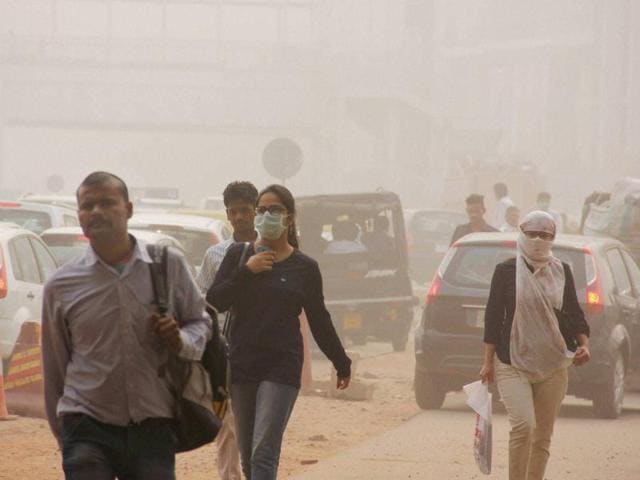Beijing air has improved rapidly, New Delhi could learn: Expert
The Chinese capital’s air quality has dramatically improved in the last couple of years and there are lessons that New Delhi could learn from how authorities in Beijing are tackling pollution, an expert from Greenpeace has said.
The Chinese capital’s air quality has dramatically improved in the last couple of years and there are lessons that New Delhi could learn from how authorities in Beijing are tackling pollution, an expert from Greenpeace has said.

Average PM2.5 levels in Beijing fell by approximately 30% from 2013 to 2015. Though the statistics are more mixed in 2016, major improvements are again expected next year, the target year of China’s national air pollution plan.
According to data from the Beijing Municipal Environment Monitoring Centre, the PM2.5 count did fall by about 12.5% till August this year.
A similar improvement in air quality could seem impossible right now in the Indian capital. But if Beijing has done it, New Delhi could too, Lauri Myllyvirta, coal and air pollution expert at Greenpeace, told Hindustan Times on Monday.
“Whether you look at industrial pollution, crop burning or transport, the situation for New Delhi is similar to Beijing - the vast majority of pollution comes from outside the city, 60% to 90% according to one IIT-Delhi study. This means that action on the regional level will be absolutely key,” Myllyvirta said.
The key sources of pollutants in both cities are similar.
“The key sectors are the same or similar - industry, transport, small-scale fuel use, biomass burning etc. China's pollution is exceptionally dominated by heavy industry and power. In India, thermal power plants are not as dominant as a share of current pollution, but they are responsible for much of the increase in pollution levels in recent years,” he said.
Though Air Quality Index scores are calculated differently in New Delhi and Beijing, pollution can be compared on the basis on concentrations.
“For example, according to the latest version of the World Health Organisation Ambient Air Pollution database, Delhi’s average PM2.5 level was 122ug/m3 in 2012, while Beijing's was 85ug/m3 in 2014. As said, Beijing's level has fallen since then, while Delhi's has increased,” Myllyvirta said.
“India is currently debating the implementation of new, strong emission standards for sulphur dioxide and NOx emissions from thermal power plants. As these emissions have been essentially unregulated until now, and they are one of the key drivers of worsening air quality, this is a key test for the government's resolve,” he said. “Regional action on crop burning is of course key as well.”
What has China, and Beijing, done to improve air quality?
“Since 2013, the year that the tide turned on air pollution, China has covered all of its new electricity needs from non-fossil energy, and reduced total coal consumption significantly. The country has implemented strict emission standards in coal-fired power plants and other key industries and improved the enforcement of the standards,” Myllyvirta said.
Measures were put in place in provinces and cities, such as controlling dust at construction sites and restricting street-side barbeques, replacing small-scale coal burning with cleaner heating methods and limiting the number of cars on streets.
“The most important step, however, is the dramatic reduction in regional-level industrial pollution - the largest falls were seen in SO2 and NOx emissions which are key contributors to PM2.5,” he said.
Myllyvirta had a word of caution about using cloud seeding to clear smog. “If the conditions are right, it would in principle be possible to engineer a reduction in air pollution in a limited area for a day or two, but it absolutely does not work as a long-term, regional solution.
“The effect of cloud seeding is more shifting the time and place of rain than creating more rain, so it cannot solve the pollution crisis that affects the entire Indo-Gangetic plain for essentially the whole winter. Ditto for the entire Eastern China region.”



